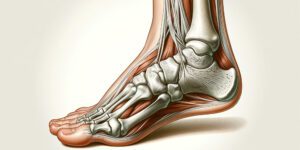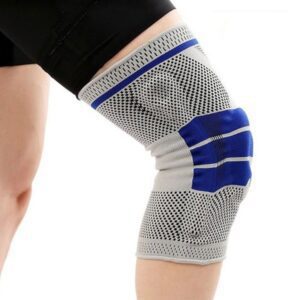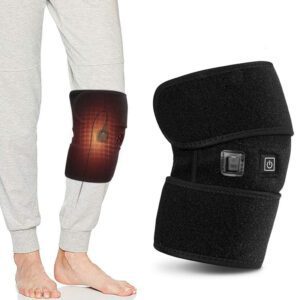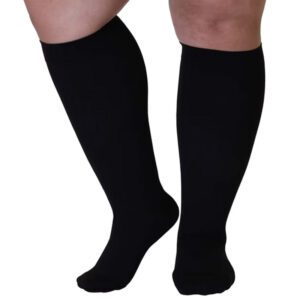Are you tired of feeling stiff and restricted in your movements? Have you tried various stretching techniques but haven’t achieved the desired results? Look no further, because Fascial Stretch Therapy (FST) might just be the solution you’ve been searching for.
FST is a cutting-edge manual therapy that targets the fascia – a complex web of connective tissue that surrounds and supports our muscles, bones, and organs. By specifically targeting the fascia, FST aims to improve flexibility, increase range of motion, relieve pain, and prevent injuries.
Definition and Overview of FST
Fascial Stretch Therapy can be described as a gentle hands-on technique that combines stretching with traction. Unlike traditional static stretching methods that focus solely on muscles, FST takes a holistic approach by considering the interconnectedness of the entire fascial system. Trained therapists use their hands to manipulate and stretch the client’s body in a systematic manner, working on multiple planes of movement to release restrictions within the fascia.
The primary goal of FST is to create a balance between flexibility, stability, strength, and mobility throughout the body. By addressing imbalances or limitations within the fascia that may have developed due to injury, overuse or poor posture habits; FST helps restore optimal function and movement patterns.
Brief History of FST’s Development
The development of Fascial Stretch Therapy can be attributed to Ann Frederick and Chris Fredrick who co-founded “The Stretch To Win Institute” in 1995. Both experienced practitioners and educators in sports performance optimization and bodywork therapies, sought ways to enhance athletic performance while minimizing injury risk. Their journey led them to explore various modalities including yoga, Pilates, physical therapy techniques like PNF stretching (Proprioceptive Neuromuscular Facilitation), and principles from Eastern medicine such as Thai massage.
Through years of research, experimentation, and collaboration with other experts, they refined their approach to create what is now known as Fascial Stretch Therapy. Since its inception, FST has gained popularity among professional athletes, fitness enthusiasts, and individuals seeking pain relief or enhanced mobility.
Its effectiveness has been recognized by sports teams, rehabilitation centers, and performance coaches across the globe. Now that we have a basic understanding of what Fascial Stretch Therapy entails and its origins, let’s delve deeper into the fascinating world of fascia and discover how FST can specifically benefit your body.
Understanding the Fascia
What is fascia and its role in the body?
When it comes to understanding the body’s intricate web of connective tissues, fascia takes center stage. Fascia can be thought of as a three-dimensional spiderweb-like matrix that envelops and interconnects every muscle, bone, nerve, and organ in our bodies.
It acts as a protective sheath, providing support and stability while allowing for movement and flexibility. This remarkable tissue plays a vital role in maintaining our overall structural integrity.
Think of fascia as a multi-layered system that weaves throughout our entire body. It not only holds our muscles together but also surrounds individual muscle fibers down to the cellular level.
Fascia is made up of collagen fibers, which are incredibly strong yet flexible. This composition allows it to transmit forces generated during movement while simultaneously protecting delicate structures such as nerves and organs.
Different types of fascia and their functions
Fascia isn’t a one-size-fits-all entity; rather, it can be classified into different types based on its location and function within the body. Let’s explore some of these fascinating variations:
1. Superficial Fascia: Found just beneath the skin, this type of fascia serves multiple purposes. It provides insulation against temperature changes, stores fat cells for energy reserves, and aids in shock absorption.
2. Deep Fascia: Situated beneath superficial fascial layers, deep fasciae wrap around individual muscles or groups of muscles like tight sleeves. They provide support while separating different muscle compartments to prevent friction or interference during movement.
3. Visceral Fascia: Also known as organ fasciae or mesenteries, visceral fasciae surround internal organs like a snug garment. They provide stability to these organs while allowing for necessary movements such as expansion during breathing or digestion.
4. Cranial Fascia: This specialized fascial system envelops the skull and its contents, providing protection and support to the brain, cranial nerves, and blood vessels. It also allows for optimal movement of the skull’s bony plates during birth or growth.
5. Joint Capsule Fascia: Found around synovial joints like our knees or shoulders, joint capsule fasciae enclose the articular surfaces and provide stability while allowing for smooth movement. They also contain specialized receptors that provide feedback about joint position and movement.
Understanding the different types of fascia helps us realize its significance in maintaining structural integrity, supporting movement, and ensuring overall bodily function. Fascial Stretch Therapy leverages this knowledge to target specific areas of tension or restriction within these interconnected fascial networks, unlocking a world of improved flexibility and pain relief.
Benefits of Fascial Stretch Therapy
Improved Flexibility and Range of Motion
When it comes to achieving better flexibility and increased range of motion, fascial stretch therapy (FST) is a game-changer. Unlike traditional stretching methods that primarily target individual muscles, FST focuses on stretching the fascia, which is the connective tissue surrounding our muscles, bones, and joints.
By targeting specific muscle groups and applying gentle stretching techniques, FST helps lengthen and release tension in the fascia. This approach allows for a more comprehensive and effective improvement in flexibility compared to conventional stretching routines.
How FST Targets Specific Muscle Groups
One of the unique aspects of fascial stretch therapy is its ability to specifically target different muscle groups. An experienced FST practitioner understands how various muscles are interconnected through their surrounding fascia.
By systematically manipulating the body’s positioning and applying precise stretches, these practitioners can isolate specific areas that require attention. This targeted approach ensures that each muscle group receives adequate stretching while minimizing strain on other areas of the body.
The Science behind Increased Flexibility through Fascial Stretching
To understand how FST enhances flexibility at a deeper level, we need to delve into the science behind it. The fascia plays a crucial role in maintaining healthy movement patterns by providing support, stability, and elasticity to our muscles and joints. When this connective tissue becomes stiff or restricted due to factors such as poor posture or injury, it limits our range of motion.
Fascial stretch therapy works by applying gentle traction forces that gradually elongate the fascia surrounding targeted muscle groups. As this happens, adhesions within the tissue are broken down while blood flow increases.
These combined effects promote collagen synthesis within the fascia, leading to improved tissue extensibility over time. Essentially, FST encourages positive remodeling of the fascia, helping individuals regain flexibility and freedom of movement.
Pain Relief and Injury Prevention
Beyond its benefits for flexibility, fascial stretch therapy offers significant pain relief and injury prevention advantages. By addressing both chronic pain conditions and the risk of future injuries, FST provides a holistic approach to musculoskeletal well-being.
How FST Can Alleviate Chronic Pain Conditions
Chronic pain can be debilitating, affecting our quality of life in multiple ways. Fascial stretch therapy is highly effective in reducing discomfort associated with conditions such as back pain, sciatica, tendonitis, and fibromyalgia. By gently stretching the fascia surrounding affected areas, FST helps release tension in muscles and improves blood circulation.
This alleviates pressure on nerves while promoting relaxation and reducing inflammation within the targeted tissues. Many individuals who have struggled with long-term pain find relief through regular FST sessions.
The Role of Fascial Elasticity in Injury Prevention
Preventing injuries is always preferable to treating them after they occur. Fascial stretch therapy focuses on maintaining optimal fascial elasticity to minimize the risk of injuries during physical activities or daily movements.
When our fascia lacks suppleness due to factors like prolonged sitting or repetitive motions without proper stretching, it can lead to imbalances and compensations in muscle function. These imbalances make us more prone to strains, sprains, or even more severe injuries.
Through regular FST sessions that promote flexibility and pliability of the fascia, we enhance our body’s ability to move smoothly and adaptively while reducing the chances of injury. Fascial stretch therapy offers a wide array of benefits for both improving flexibility and preventing injuries.
By targeting specific muscle groups through precise stretches focused on the surrounding connective tissue (i.e., fascia), FST provides a unique approach that yields comprehensive improvements in the range of motion. Additionally, FST helps alleviate chronic pain conditions by releasing tension and reducing inflammation in affected areas.
By promoting fascial elasticity, this therapy also plays a crucial role in injury prevention by maintaining proper muscle balance and reducing the risk of strains or sprains. Incorporating fascial stretch therapy into your routine can be highly advantageous for anyone seeking to enhance their physical performance, reduce pain, and safeguard against injuries.
The Fascial Stretch Therapy Process
Assessment phase: Identifying individual needs and goals
When you embark on your fascial stretch therapy (FST) journey, the first step is the assessment phase. This is where your therapist gets to know you, your body, and your specific needs and goals. They take the time to understand your movement patterns, restrictions, and imbalances.
During this assessment, the therapist may observe how you walk, stand, or perform certain movements to identify any areas of concern or limitations in your range of motion. They may also ask you questions about any pain or discomfort you experience during specific activities.
Evaluating movement patterns, restrictions, and imbalances
Once the assessment phase begins, your therapist will dive deeper into evaluating your movement patterns, restrictions, and imbalances. They will analyze how different parts of your body move in relation to each other.
For example, if you have tightness or limited mobility in one hip compared to the other when performing a squatting motion, they will take note of it. By assessing such movement patterns and identifying any imbalances or restrictions present within your body’s fascial system, they can better tailor their treatment approach specifically for you.
Customizing a treatment plan based on assessment results
Based on the assessment results gathered during the evaluation phase of FST sessions, your therapist will then customize a treatment plan designed specifically for you. This personalized plan takes into account not only your unique needs but also any short-term or long-term goals that you may have.
The customized treatment plan will outline which areas need attention and what techniques should be incorporated during FST sessions to address those specific needs effectively. This tailored approach ensures that every session is focused on optimizing your results while taking into consideration any underlying conditions or limitations.
Active-assisted stretching techniques used in FST sessions
FST sessions involve various active-assisted stretching techniques that help to improve your flexibility and range of motion. Two commonly used techniques in FST are PNF (Proprioceptive Neuromuscular Facilitation) stretching and AIS (Active Isolated Stretching). PNF stretching involves a combination of contracting and relaxing specific muscles while your therapist assists you through the stretch.
This technique helps to enhance muscle flexibility by targeting both the muscle fibers and the surrounding fascial tissues. AIS, on the other hand, focuses on repetitive movements performed within a specific range of motion.
These movements actively engage targeted muscles while simultaneously stretching them. By isolating individual muscles or muscle groups, AIS allows for more precise targeting of limitations or restrictions within the fascial system.
Incorporating these active-assisted stretching techniques into FST sessions allows for a dynamic and effective approach to improving your flexibility, promoting better movement patterns, and reducing any imbalances or restrictions within your body’s fascia. To be continued…
Specialized Techniques in Fascial Stretch Therapy
Joint Mobilization: Enhancing Joint Mobility Through Specific Stretches
When it comes to improving joint mobility, fascial stretch therapy (FST) incorporates targeted techniques that focus on specific stretches. Joint mobilization is a key aspect of FST that aims to increase the range of motion and flexibility in various joints throughout the body.
By applying gentle traction and controlled movements, FST practitioners can effectively enhance joint mobility. The process of joint mobilization involves carefully manipulating the joints through a series of stretches and movements.
The practitioner applies specific techniques that gently separate the joint surfaces, allowing for increased space and freedom of movement. This technique is particularly beneficial for individuals experiencing joint stiffness, restricted mobility, or recovering from injuries.
During a session, the FST practitioner will identify the areas with limited range of motion or discomfort. They then apply targeted stretches using their hands and body positioning to gently loosen up the joint capsules.
By gradually introducing controlled movement into these joints, FST helps restore flexibility and function. The beauty of joint mobilization within fascial stretch therapy lies in its specificity.
Unlike general stretching routines that may overlook individual needs, FST focuses on addressing specific joints affected by tightness or immobility. Whether it’s your shoulder girdle, hip complex, or even smaller joints like those in your fingers or toes – joint mobilization targets them all.
Myofascial Release: Addressing Adhesions Within the Fascia for Improved Function
Another vital technique utilized within fascial stretch therapy is myofascial release (MFR). This technique focuses on addressing adhesions within the fascia – the connective tissue surrounding muscles – to improve overall function and alleviate pain. Adhesions are areas where the fascia becomes bound together due to trauma, injury, inflammation, or repetitive stress.
These adhesions restrict movement and can cause discomfort or pain. Myofascial release aims to break down these adhesions to restore optimal functioning of the fascial system.
During an MFR session, the practitioner applies gentle pressure on specific areas of restricted fascia. This pressure helps release tension and promotes the elongation and realignment of the fascial tissue.
By directly targeting these adhesions, myofascial release helps increase circulation, reduce inflammation, and improve overall tissue health. The techniques involved in the myofascial release can vary, including sustained pressure or gentle stretching movements applied by the FST practitioner.
They may also incorporate tools like foam rollers or therapy balls to enhance the effectiveness of this technique. Through consistent application, myofascial release can lead to lasting improvements in flexibility, range of motion, and overall physical well-being.
Specialized techniques such as joint mobilization and myofascial release play a crucial role within fascial stretch therapy. Joint mobilization enhances joint mobility by applying targeted stretches that increase the range of motion in specific joints throughout the body.
On the other hand, myofascial release specifically addresses adhesions within the fascia to improve overall function by reducing restrictions and promoting healthy tissue mobility. These techniques work synergistically to optimize movement potential and alleviate pain or discomfort caused by fascial restrictions.
Who Can Benefit from Fascial Stretch Therapy?
A. Athletes seeking enhanced performance and injury prevention
Athletes of all levels, from amateurs to professionals, can greatly benefit from incorporating Fascial Stretch Therapy (FST) into their training regimen. FST helps athletes achieve peak performance by improving flexibility, range of motion, and overall mobility.
By targeting specific muscle groups and releasing tension within the fascia, FST allows athletes to move more freely and efficiently. This enhanced flexibility not only enhances athletic performance but also aids in injury prevention.
By maintaining optimal muscle length and reducing restrictions in the fascia, athletes can reduce the risk of strains or tears during intense training sessions or competitions. Whether you’re a runner looking to increase stride length, a basketball player striving for better agility on the court, or a weightlifter aiming for improved joint stability during lifts – FST can be a game-changer for athletes across various disciplines.
B. Individuals with chronic pain or movement limitations
If you suffer from chronic pain conditions such as lower back pain, neck stiffness, or joint discomfort, Fascial Stretch Therapy (FST) offers an effective non-invasive solution. Unlike traditional methods that solely focus on localized treatment, FST takes a holistic approach by addressing both the affected area and its interconnected fascia.
Fascial restrictions can contribute to the persistence of chronic pain symptoms by limiting mobility and causing compensatory movements that lead to further imbalances. Through gentle stretching techniques targeted at releasing tension within the fascia network, FST helps relieve pain by restoring proper alignment and promoting better movement mechanics.
Individuals with movement limitations, whether due to injury, surgery, or conditions like arthritis, can also benefit from FST. By gradually increasing flexibility and range of motion in specific areas, FST helps regain functionality and independence in daily activities.
C. Aging population looking to maintain mobility
As we age, maintaining mobility becomes increasingly vital for a high quality of life. The aging process can lead to a loss of flexibility and decreased range of motion due to changes in the fascia’s elasticity.
Fascial Stretch Therapy (FST) offers a gentle yet effective way for the aging population to counteract these effects. FST helps improve joint health by targeting stiffness and increasing elasticity within the fascia network.
By reducing restrictions around joints, older individuals can regain mobility, allowing them to enjoy activities they love without discomfort or fear of injury. In addition to physical benefits, FST also promotes mental well-being among seniors.
The feeling of increased freedom in movement contributes to improved confidence and a greater sense of independence. Whether you’re an active senior looking to maintain your fitness level or someone experiencing age-related limitations – FST offers you the opportunity to embrace your golden years with vitality and grace.
Frequently Asked Questions about Fascial Stretch Therapy
What should I expect during a Fascial Stretch Therapy session?
During an FST session, you can expect to lie comfortably on a treatment table while the therapist gently moves and stretches your body. The techniques used are targeted and specific, focusing on different muscle groups to address your individual needs.
You might experience a combination of active-assisted stretches, joint mobilizations, and myofascial release techniques. The therapist will guide you through the process, explaining each movement and ensuring your comfort throughout the session.
Is fascial stretch therapy painful?
No, fascial stretch therapy is not meant to be painful. While you may feel some stretches as intense or challenging at times, it should never cause you significant pain.
Communication with the therapist is crucial during the session so they can adjust their technique based on your comfort level. It’s important to remember that FST aims to enhance flexibility and relieve pain, not induce discomfort.
How many sessions of fascial stretch therapy do I need before seeing results?
The number of sessions required varies depending on individual factors such as existing conditions, goals, and lifestyle habits. Generally speaking, most people notice improvements in flexibility and mobility after just a few sessions.
However, for long-term benefits such as injury prevention or chronic pain relief, regular ongoing sessions are recommended. Your therapist will assess your progress along the way and provide guidance on the optimal frequency for your specific needs.
Is fascial stretch therapy only for athletes or those with specific conditions?
Not at all! While athletes often seek FST to improve their performance and prevent injuries due to its effectiveness in targeting specific muscle groups, anyone can benefit from this therapy.
Whether you’re an office worker struggling with posture-related discomfort or an aging individual looking to maintain mobility as you age, fascial stretch therapy can be tailored to address your unique needs. It’s a versatile and effective treatment suitable for people from all walks of life.
Can I combine fascial stretch therapy with other treatments or exercise routines?
Absolutely! Fascial stretch therapy is complementary to other forms of exercise, physical therapy, and wellness practices.
In fact, combining FST with regular exercise routines or other modalities such as massage therapy or chiropractic care can enhance the overall benefits and yield more significant results. Your therapist can work in collaboration with other healthcare professionals to ensure a holistic approach that supports your well-being.
Conclusion
Fascial Stretch Therapy offers an innovative approach to enhancing flexibility, improving mobility, relieving pain, and optimizing overall physical well-being. Through targeted techniques that focus on the fascia – the connective tissue in our bodies – FST helps individuals of all backgrounds achieve their unique health goals. Whether you’re an athlete aiming for peak performance, someone seeking relief from chronic pain conditions or movement limitations, or simply looking to maintain optimal mobility as you age gracefully, fascial stretch therapy can be a valuable addition to your wellness routine.
By addressing individual needs through customized treatment plans and utilizing active-assisted stretching techniques along with joint mobilization and myofascial release methods, FST offers a comprehensive solution that targets specific muscle groups while promoting relaxation and overall rejuvenation. Embrace the potential of fascial stretch therapy as it unlocks new levels of flexibility and function in your body.
Incorporate this incredible modality into your self-care regimen and experience the transformative effects it can have on your physical well-being. Embrace the freedom of movement that comes with an optimized fascia – embrace a life where possibilities are limitless.





















